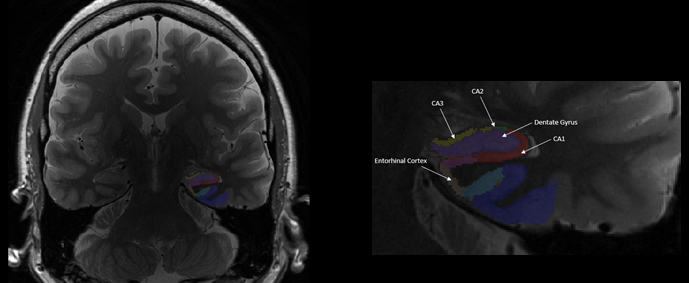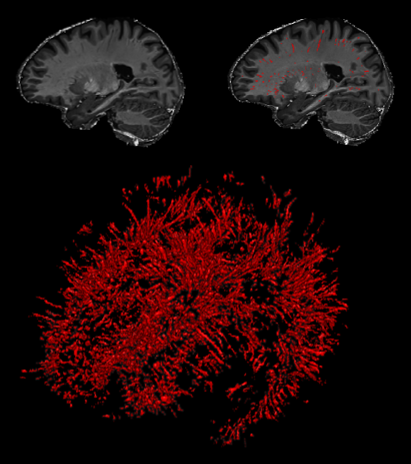The following are brain imaging pipelines I have used extensively as part of my research on aging and AD dementia. As a result, I have a strong background in visualizing, processing, and analyzing a number of different MRI modalities. This includes assessing brain morphometry on T1 and T2 images, as well as flow on PC-MRI images.
Hippocampal Subfields
ASHS (external) is a tool for segmenting and labeling the hippocampal subfields and medial temporal lobe (MTL). The software uses T1 and T2 weighted MRI’s to segment the MTL and hippocampal subfields.
Purpose: The entorhinal cortex, CA1, and CA4/dentate gyrus subfields of the hippocampus have been linked to aging and AD pathology and have also been shown to be important for spatial memory (Yushkevich PA., et al., 2014).

General Brain Morphometry
Freesurfer (external) is an open source software suite for processing and analyzing human brain MRI images. The software uses T1 MPRAGE images to segment the brain.
Purpose: Studies have shown that whole brain volumes decrease approximately .45% per year in older adults (Fotenos Anthony F., et al., 2005).

Cerebral Flow Dynamics
NeuroFlow (written by me) is a brain imaging tool for analyzing cerebral flow dynamics. Another, older option, is BioFlow (Balédent O, et al., 2001).
Purpose: The cerebral aqueduct (CA) and C2-C3 region have been shown to be sensitive to the pathological changes that occur in aging and Alzheimer’s disease (El Sankari S., et al., 2011).

Perivascular Spaces
The PVS Pipeline is an in-house pipeline tool written by Dr. Farshid Sepehrband.
Purpose: Perivascular space size is associated with Alzheimer’s disease (Banerjee G., et al., 2017)

